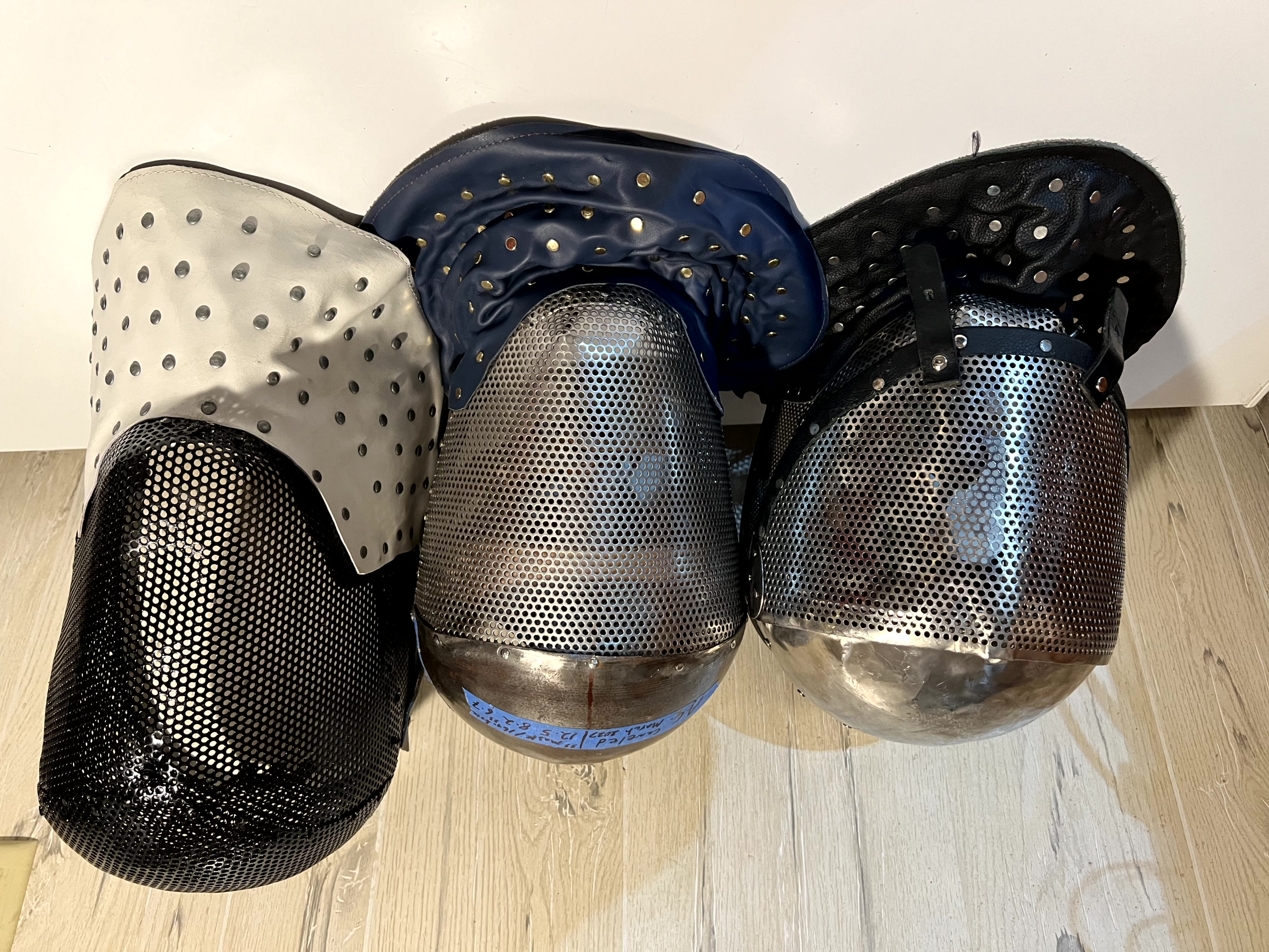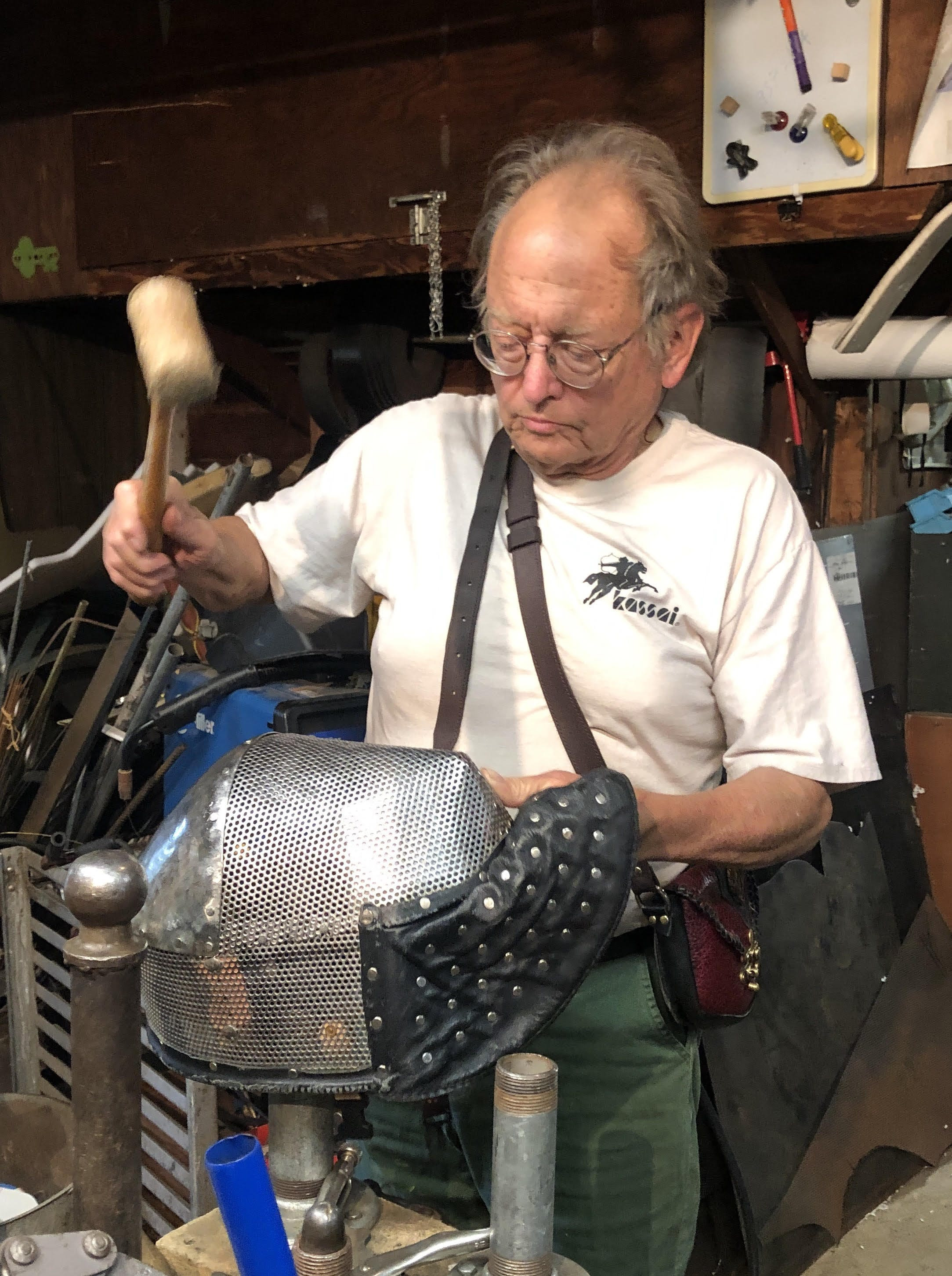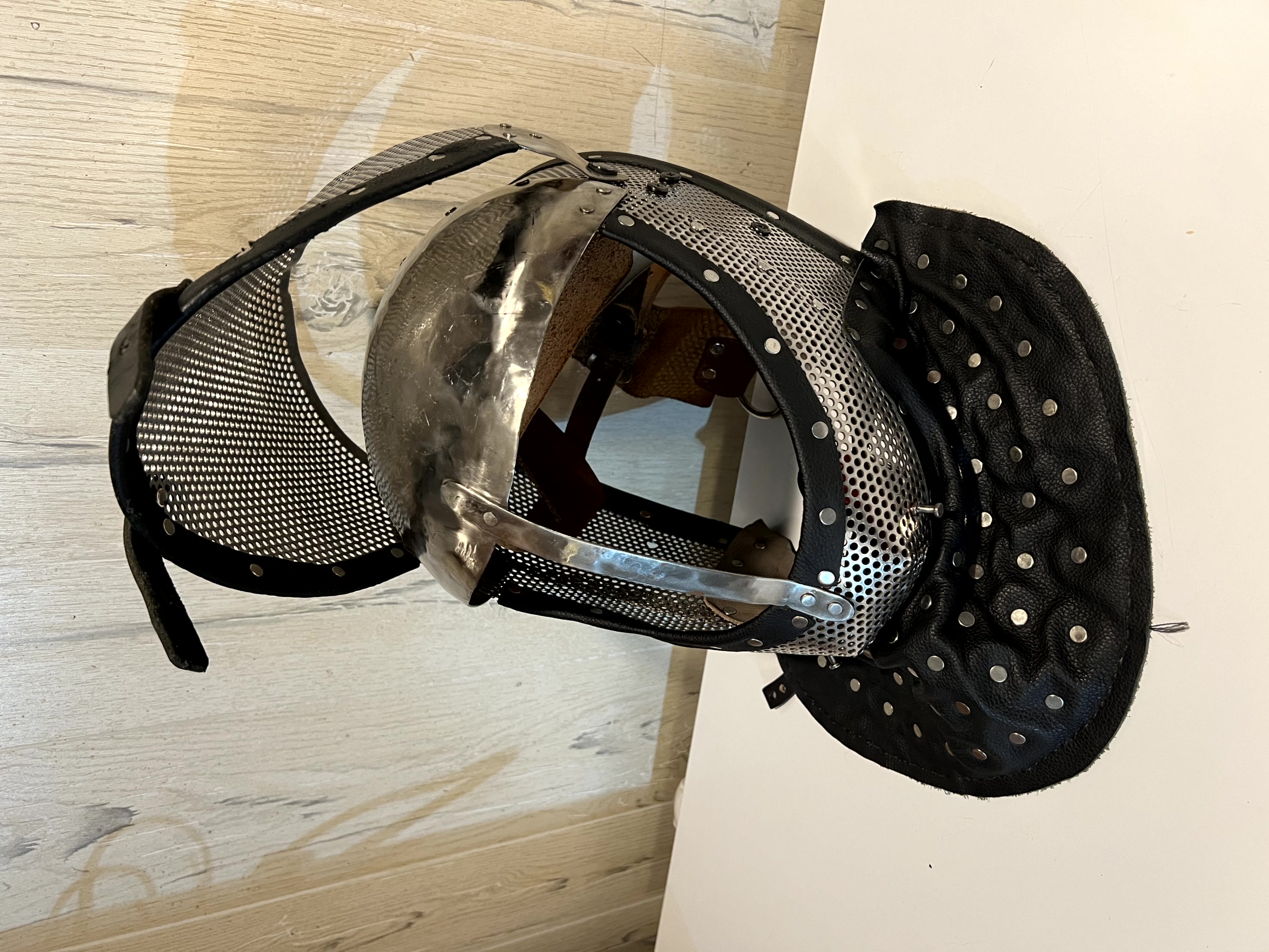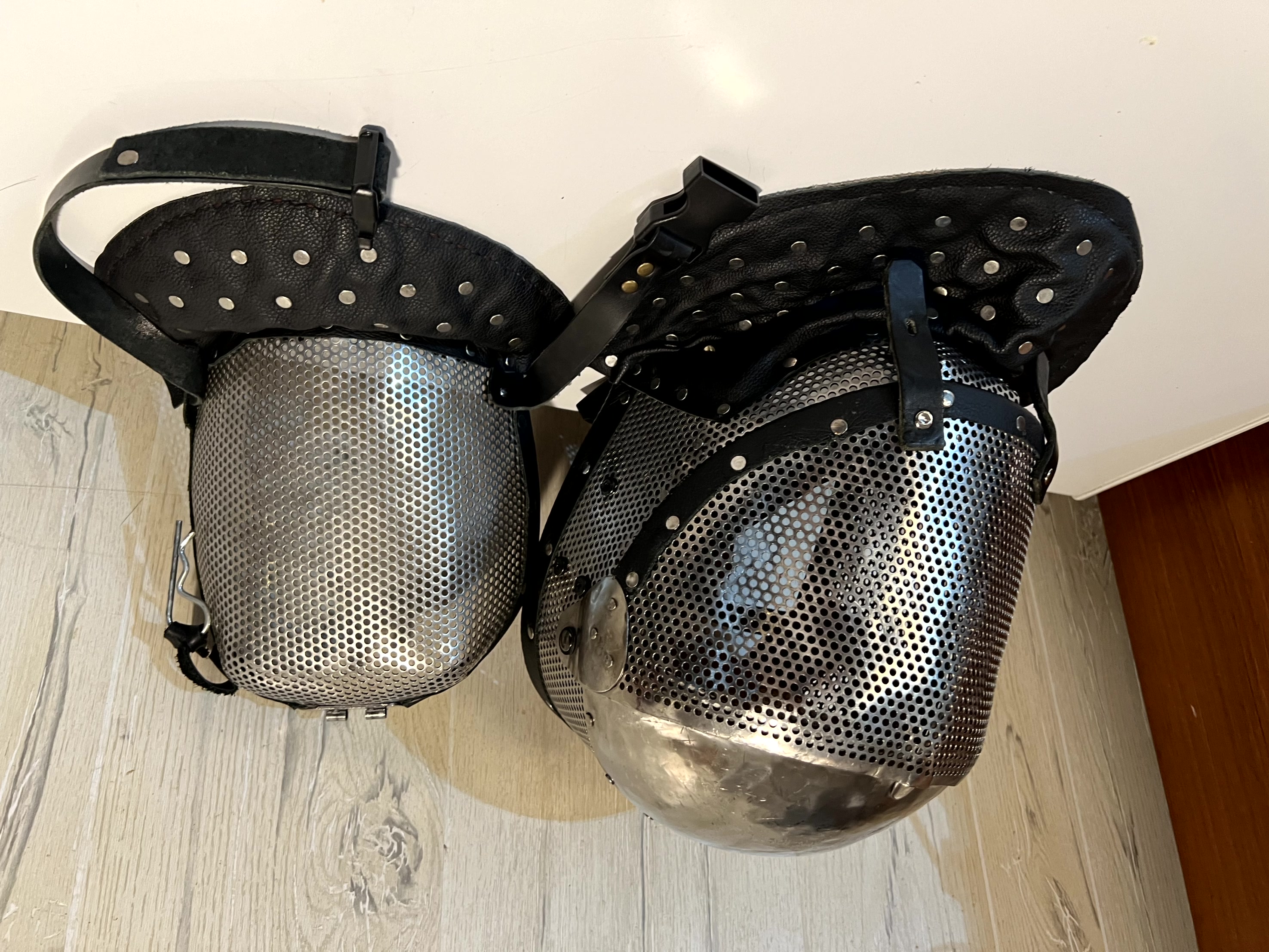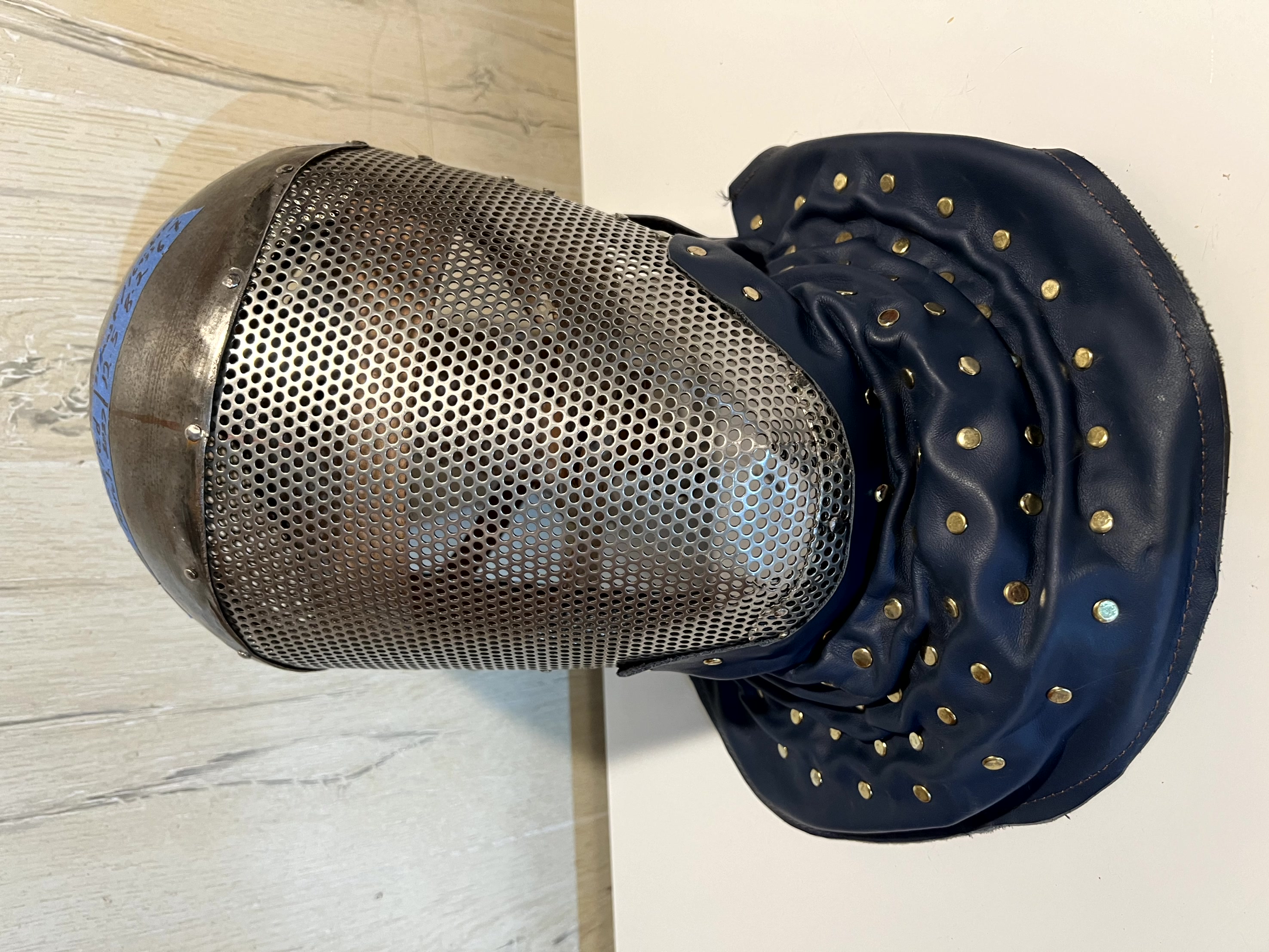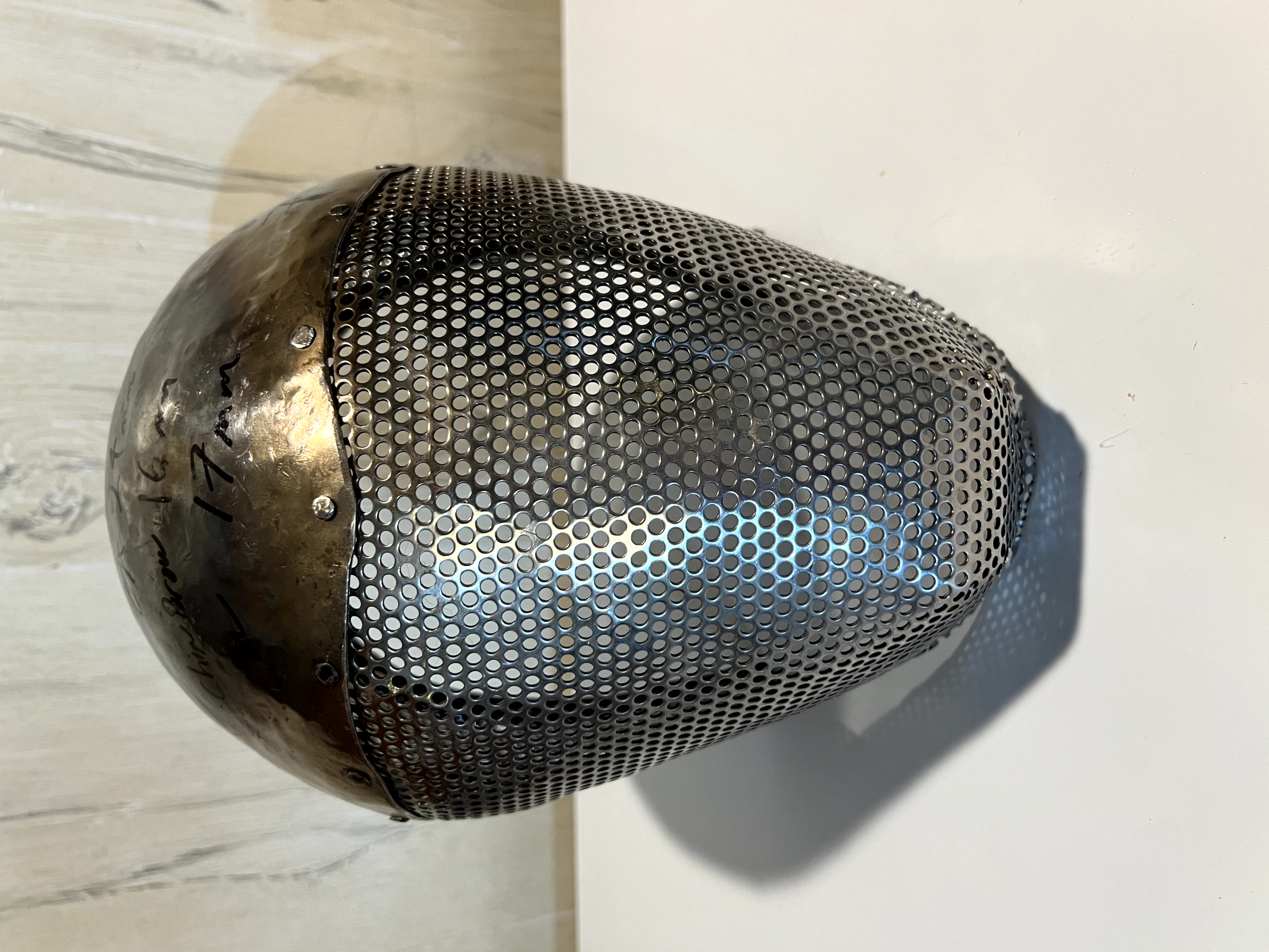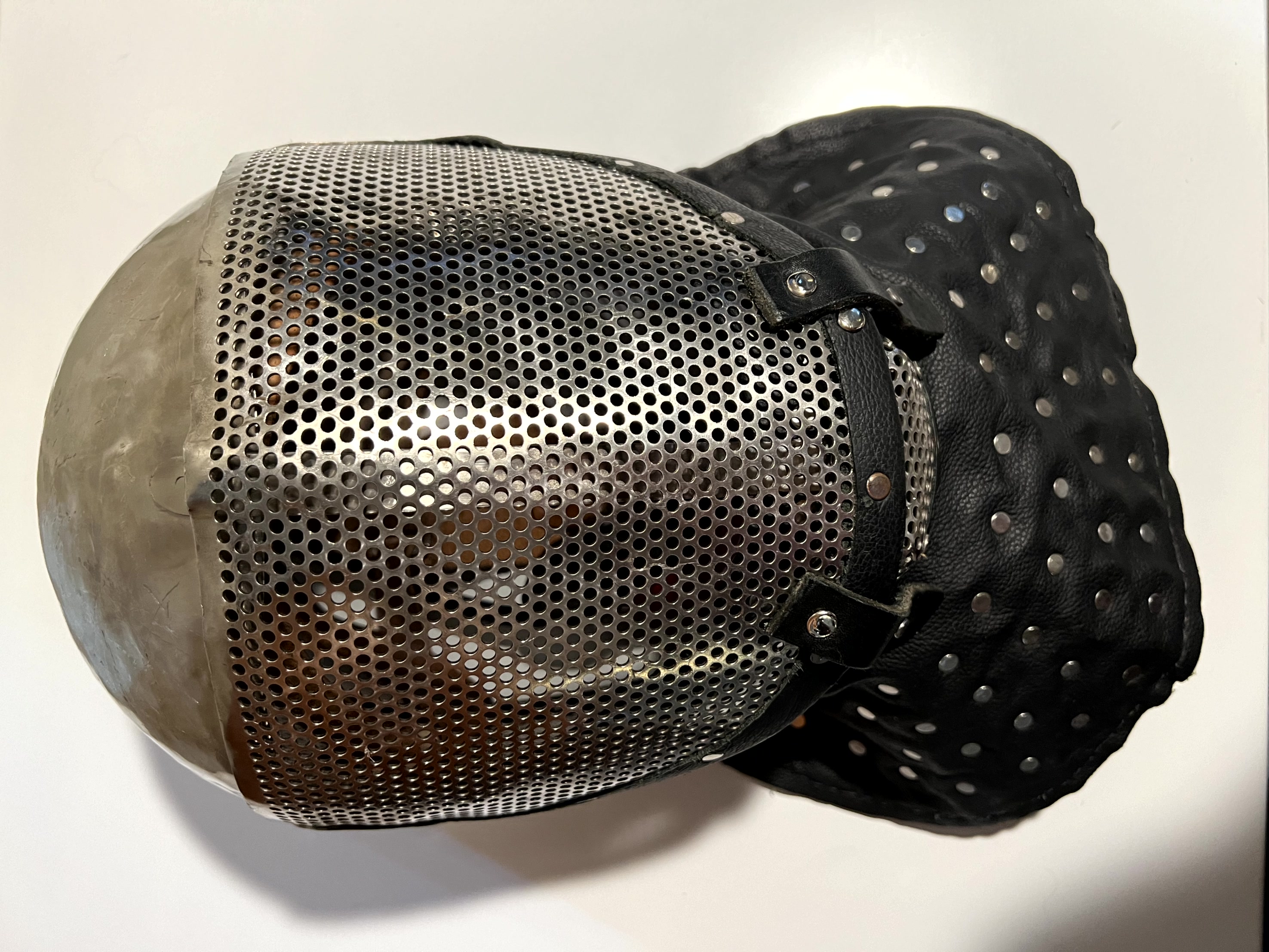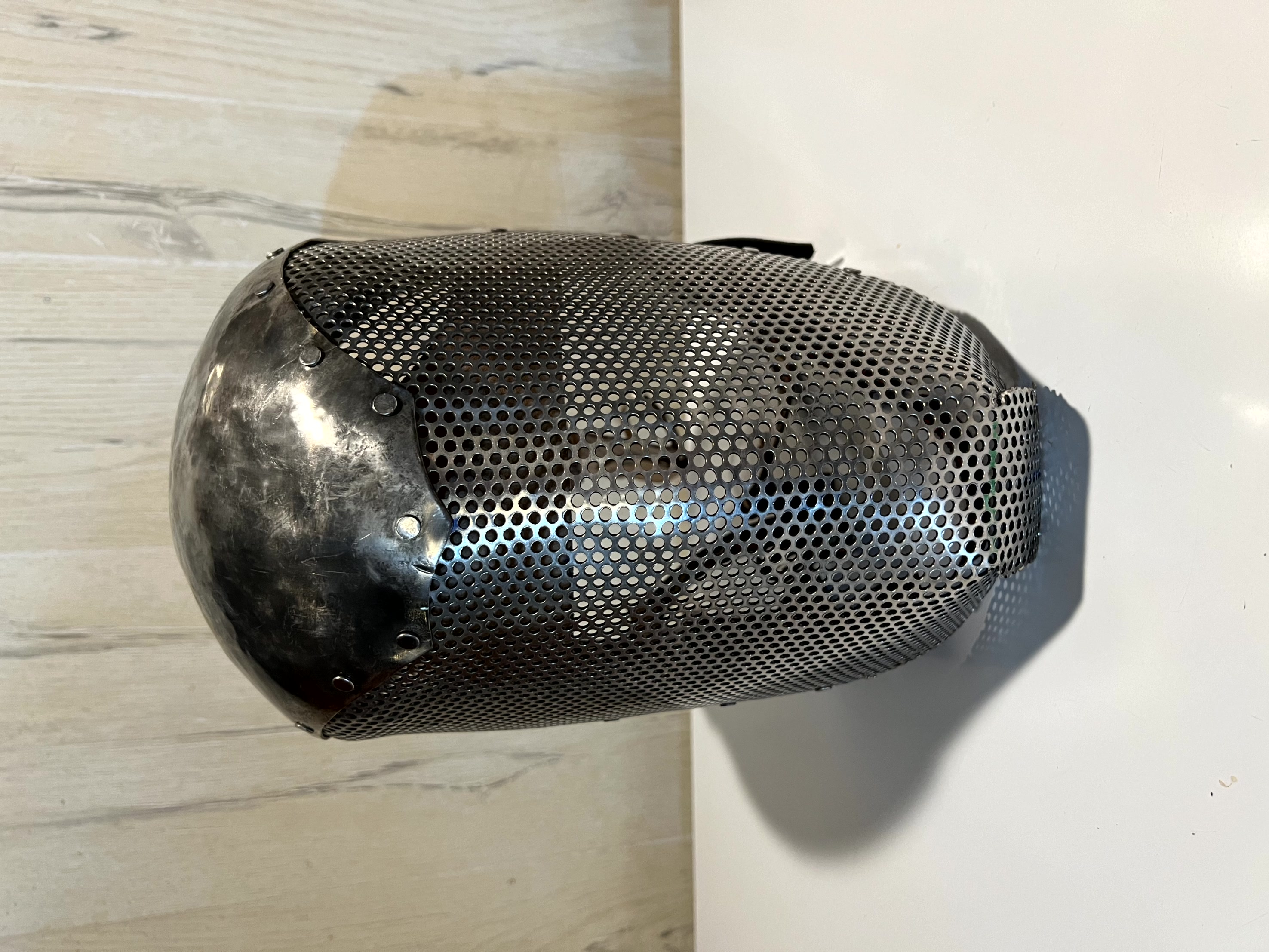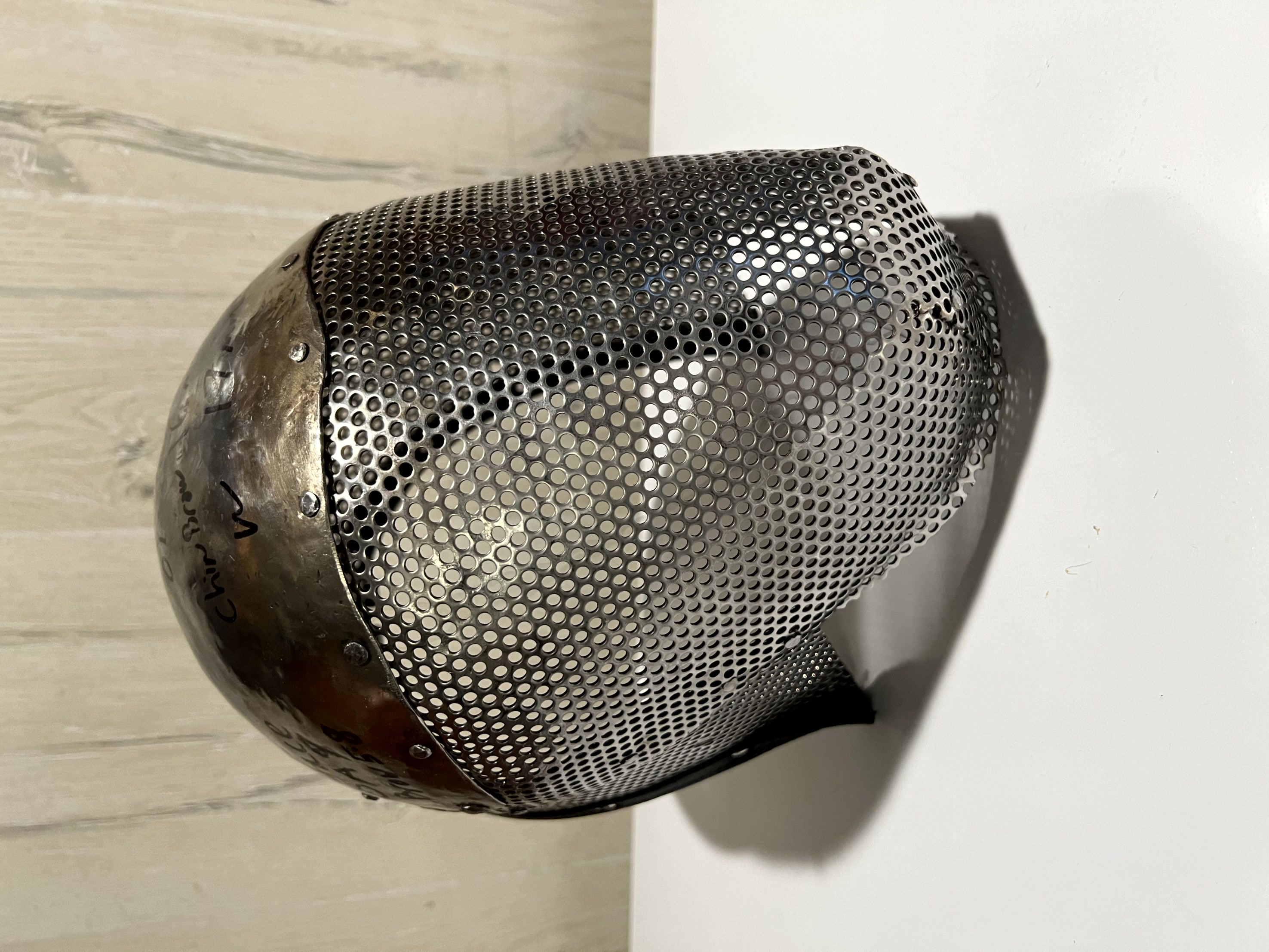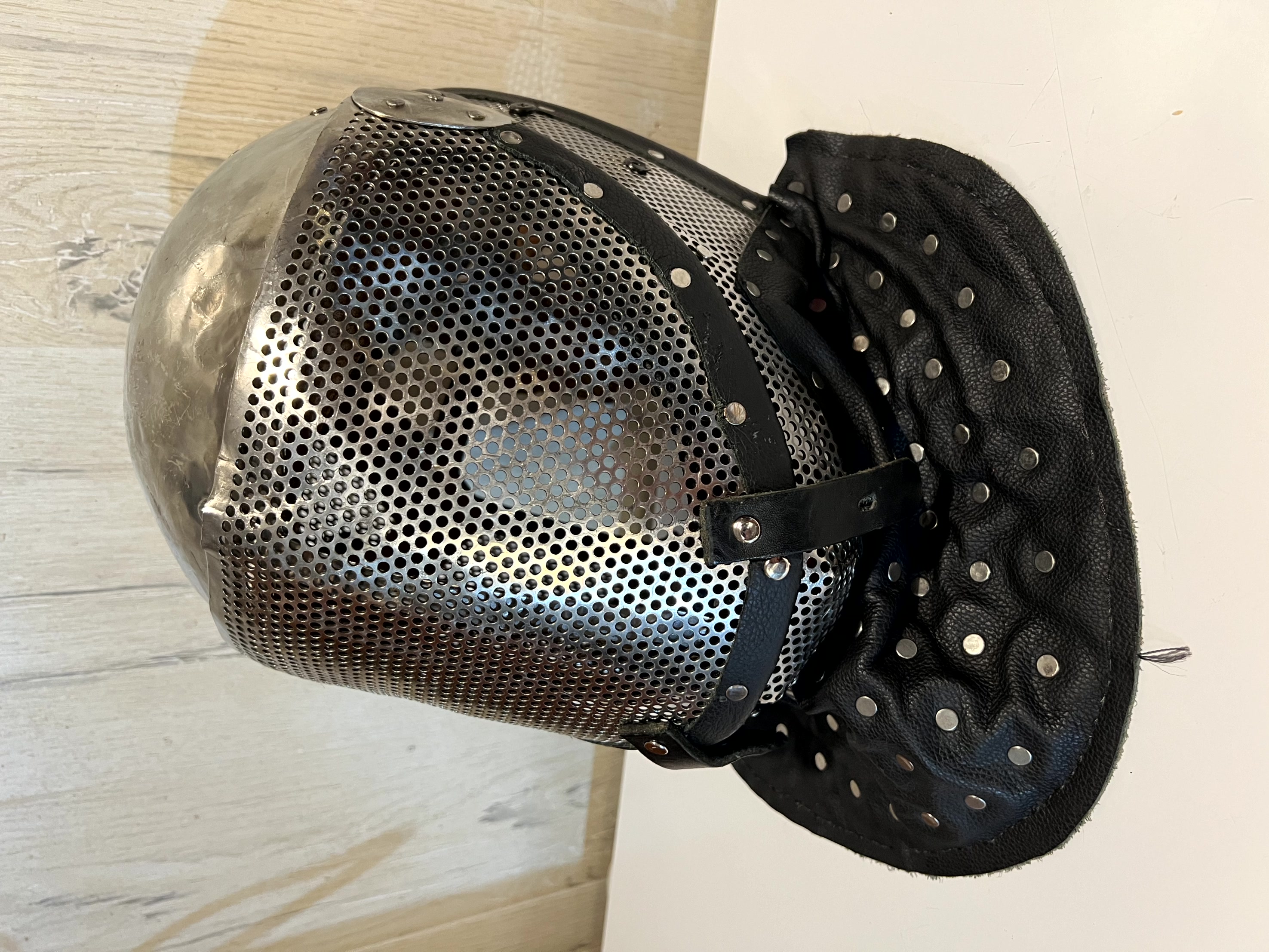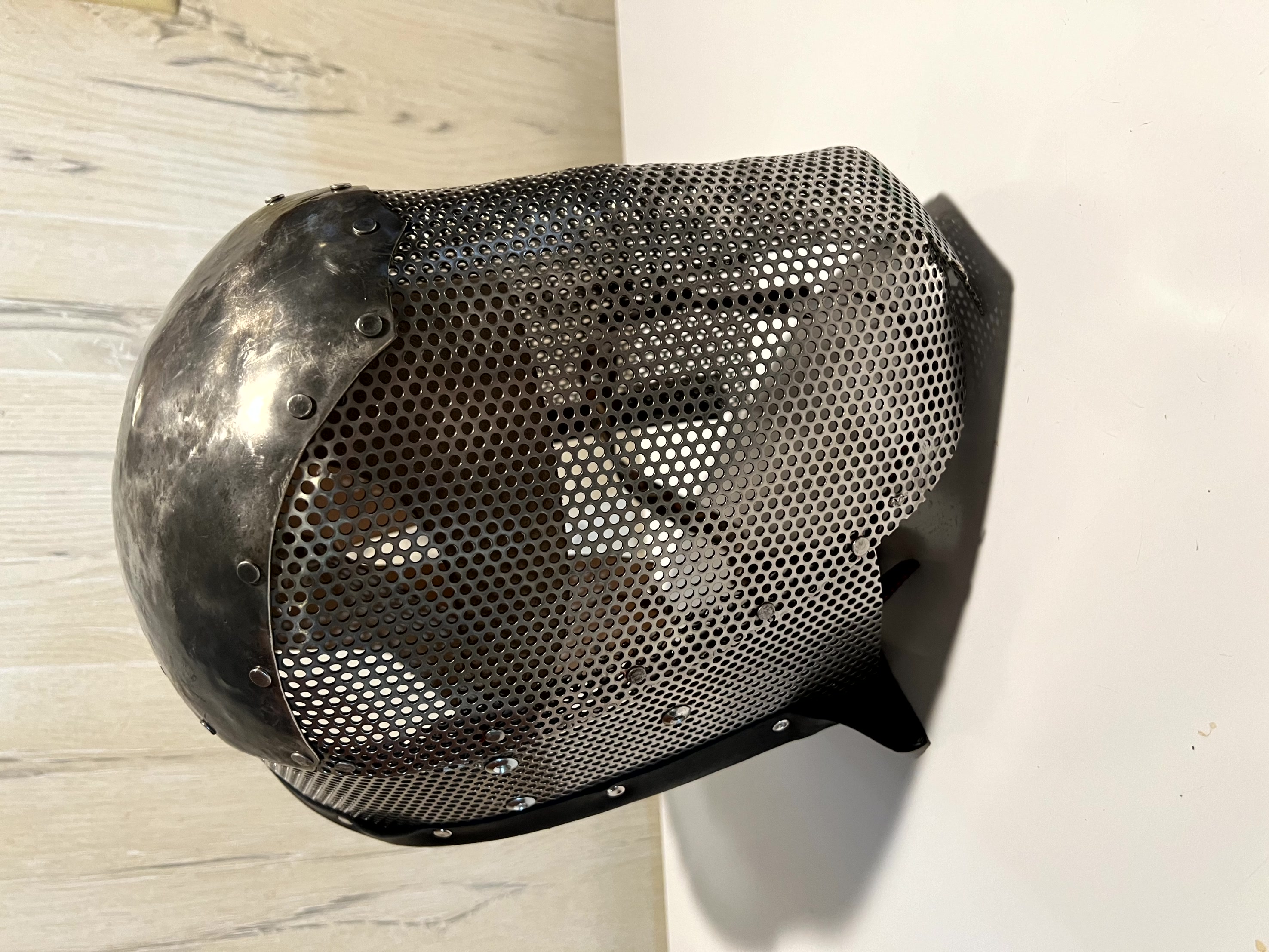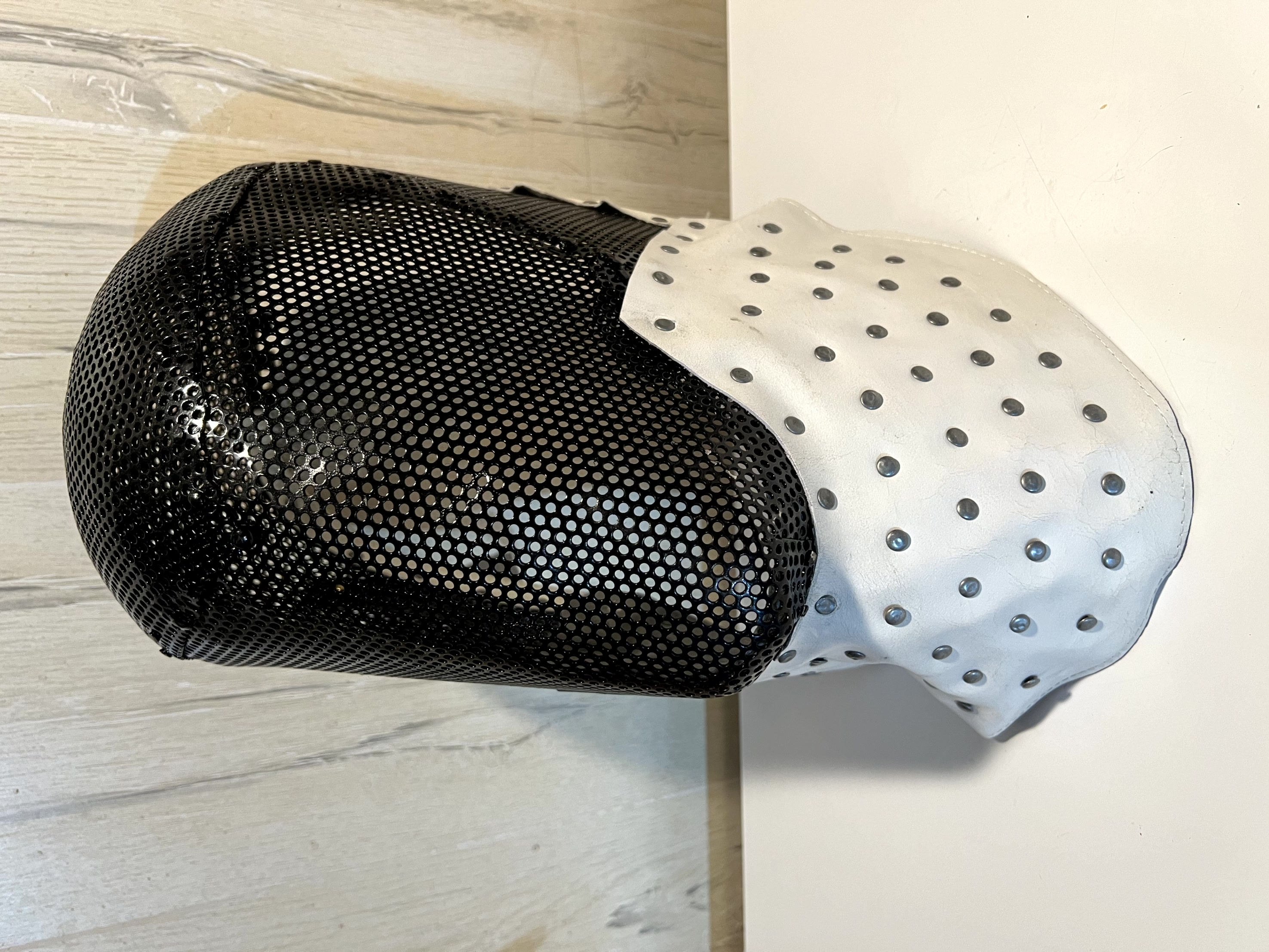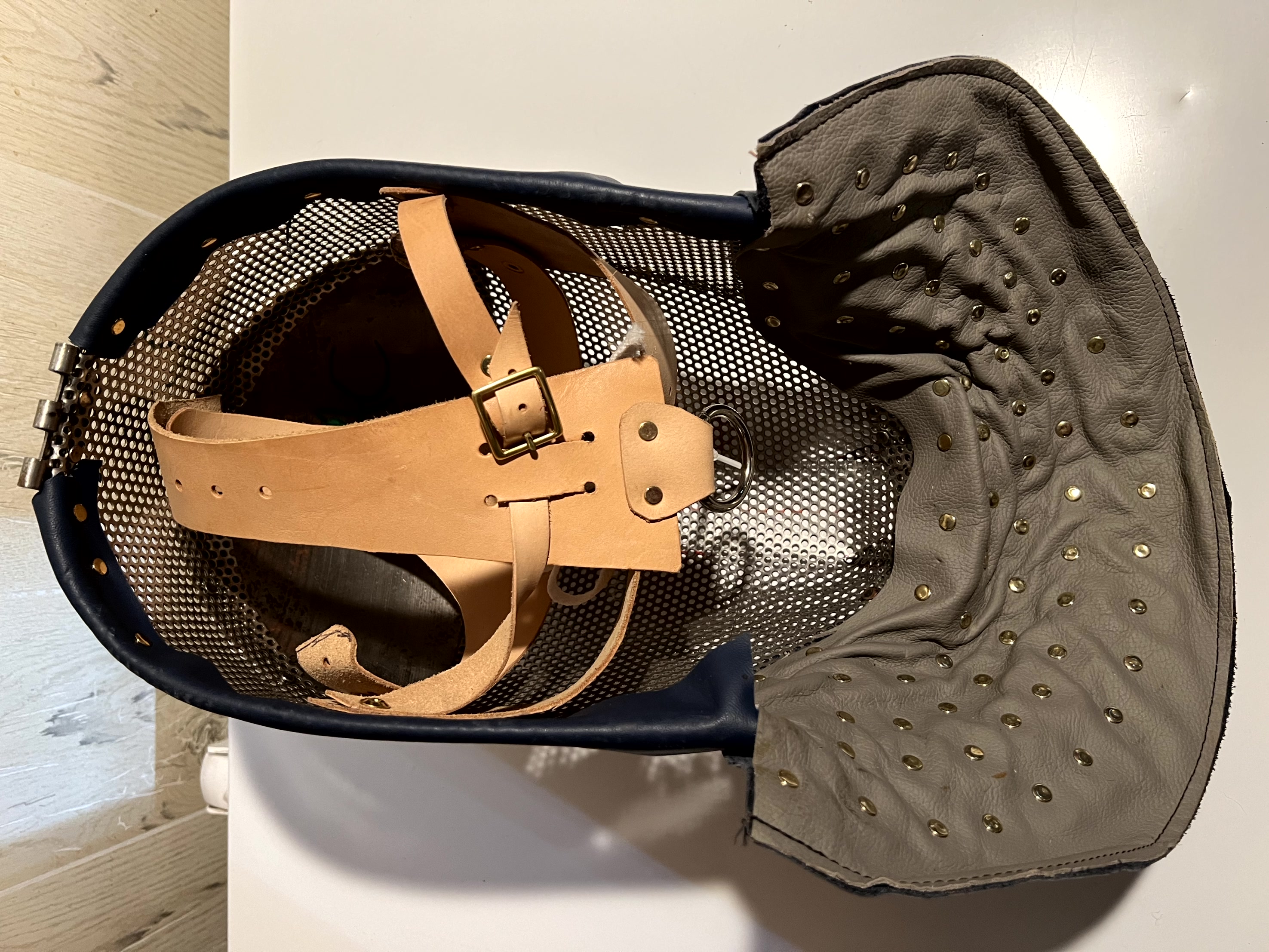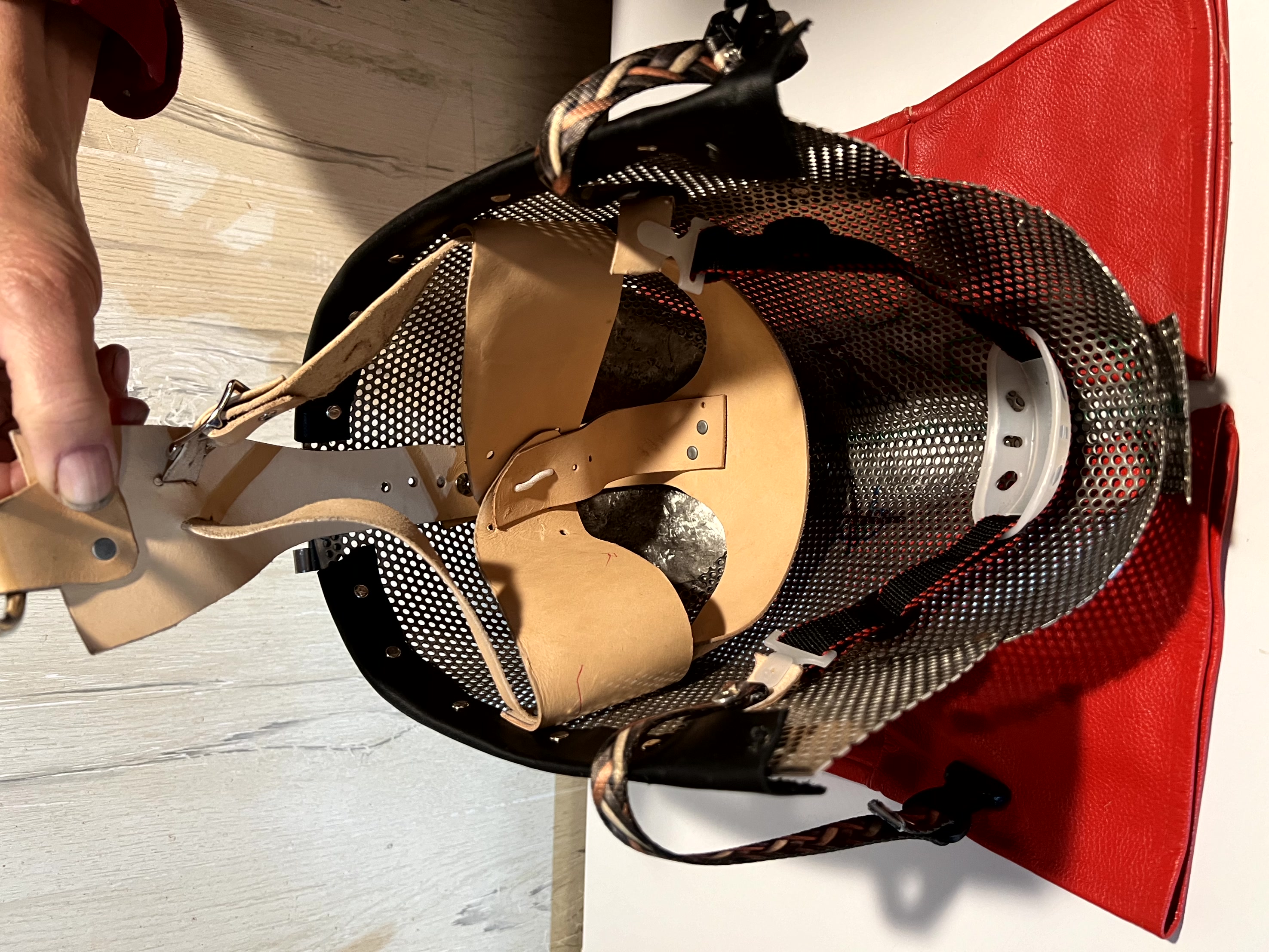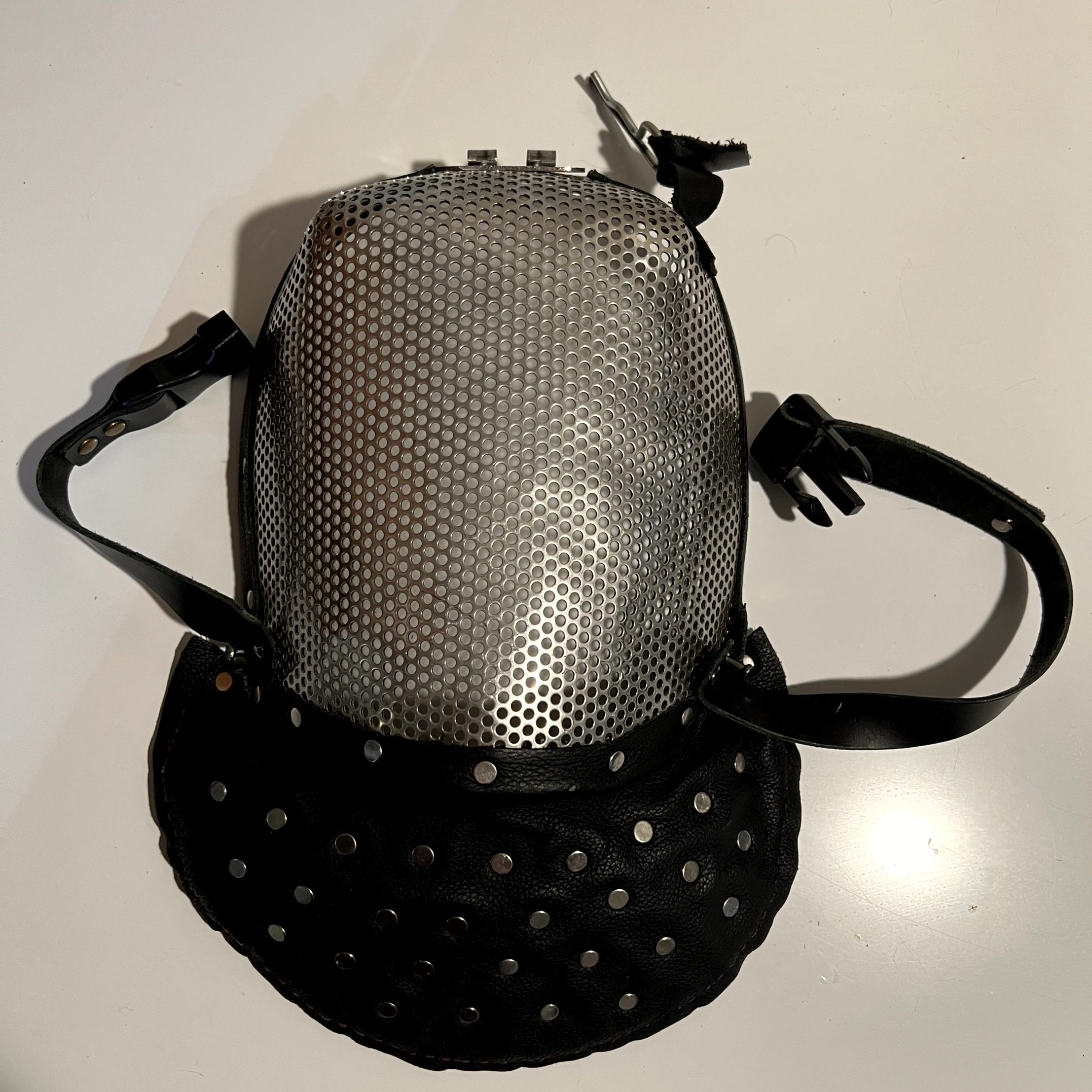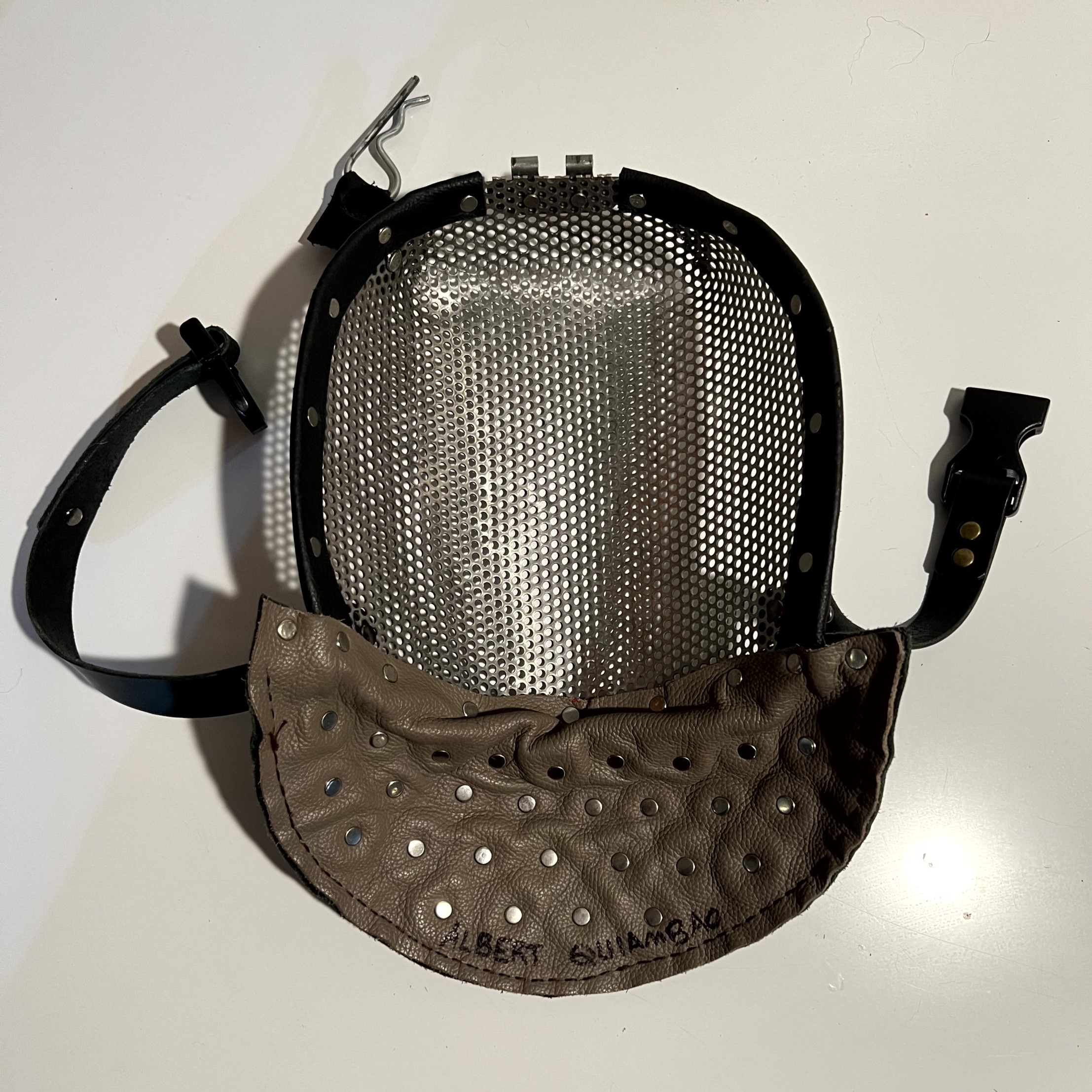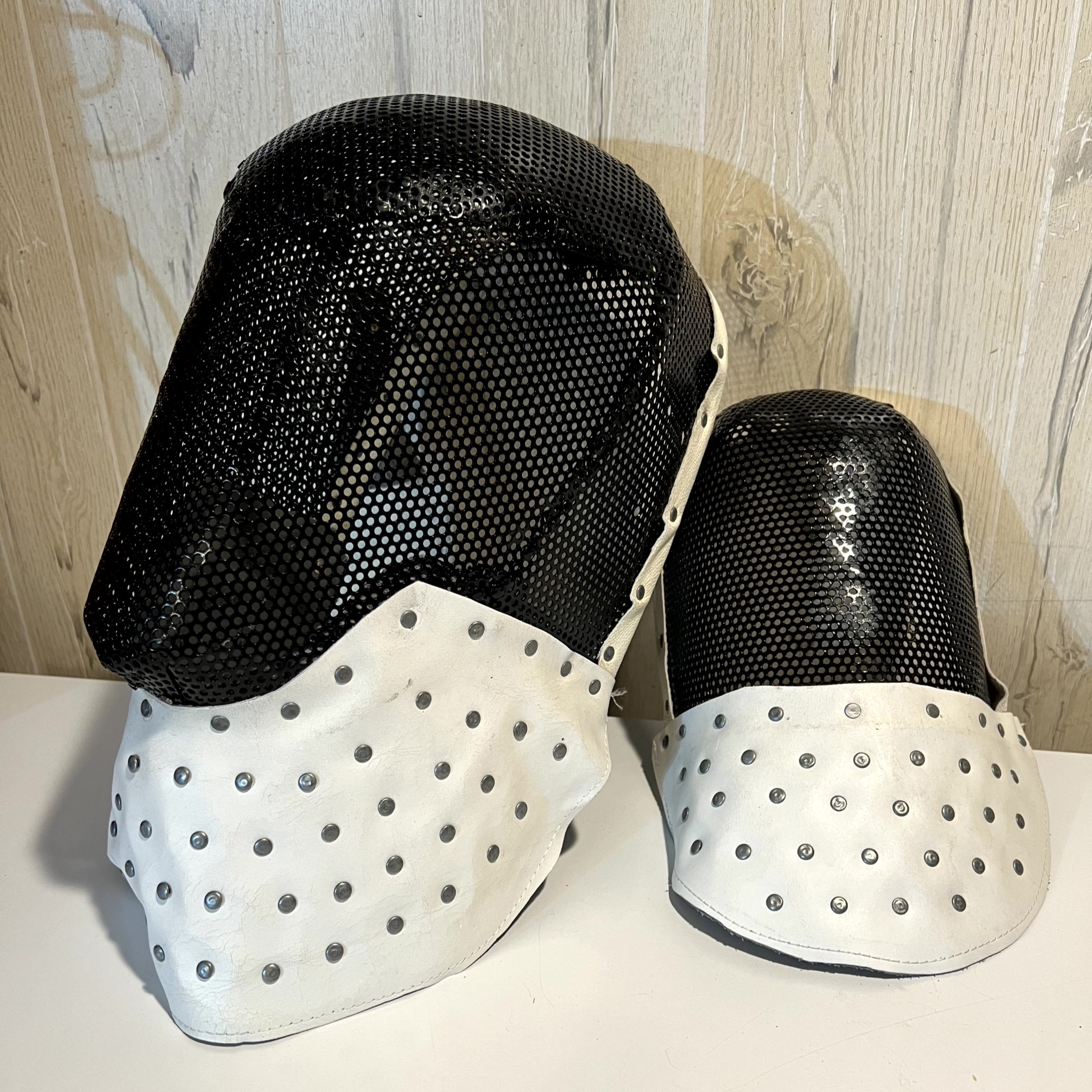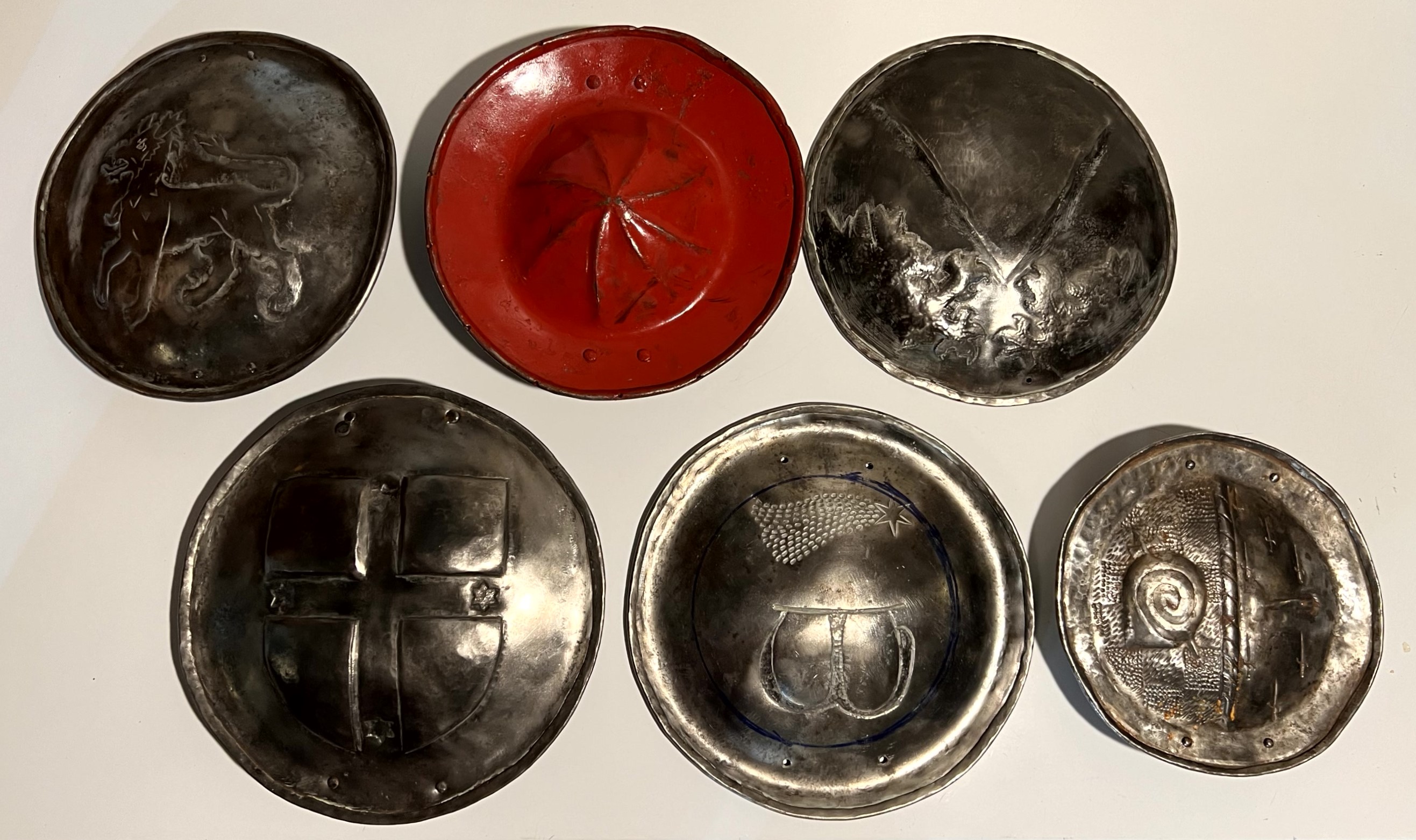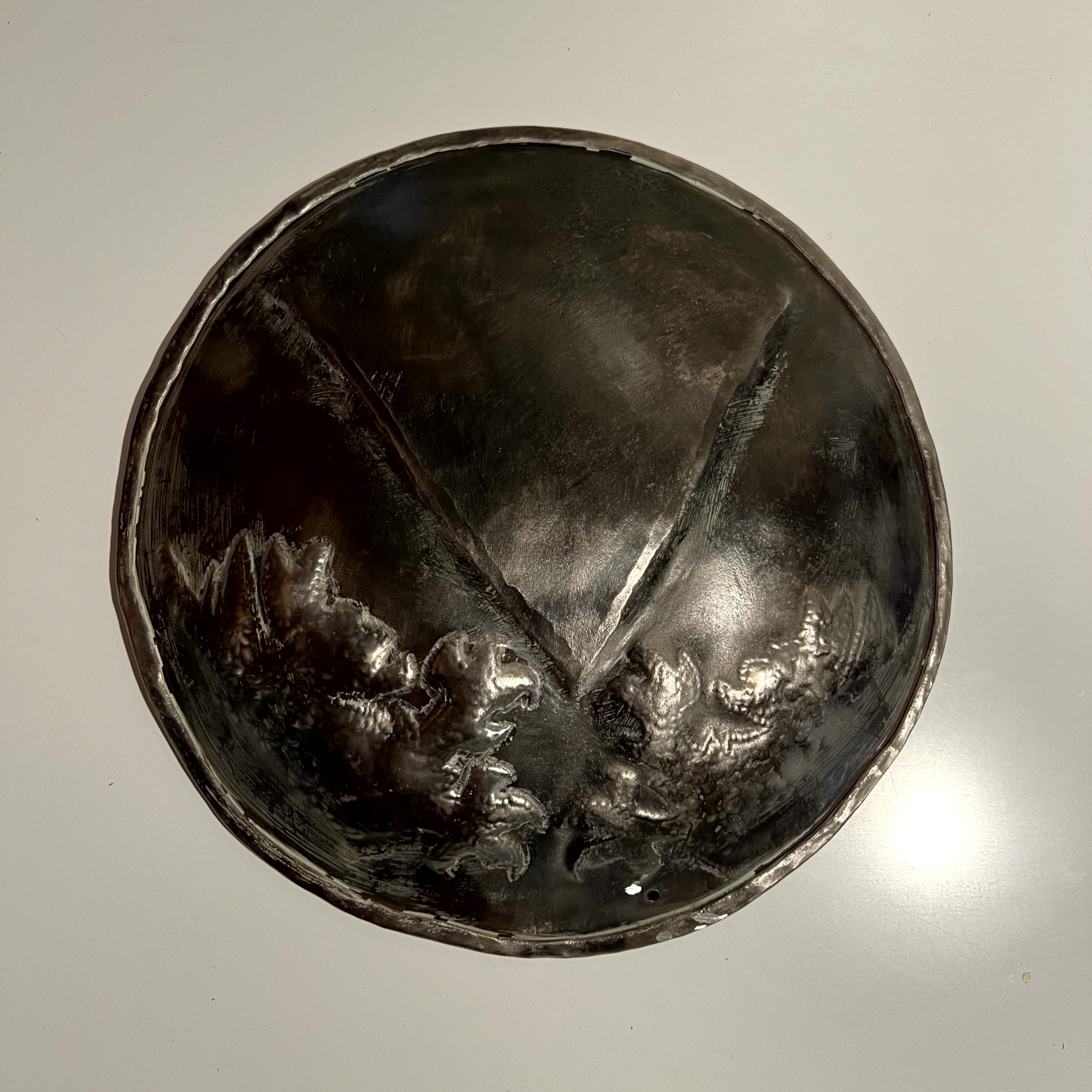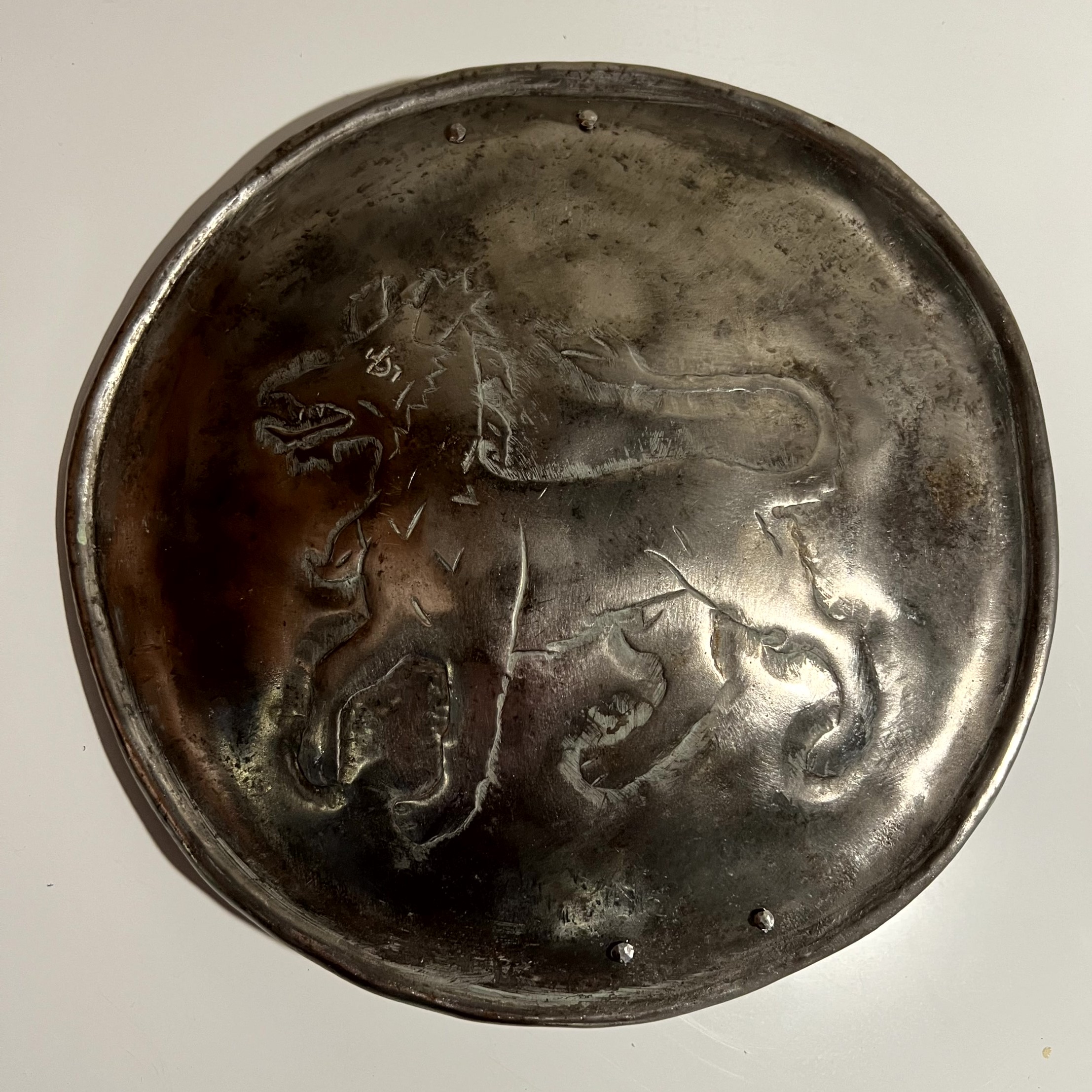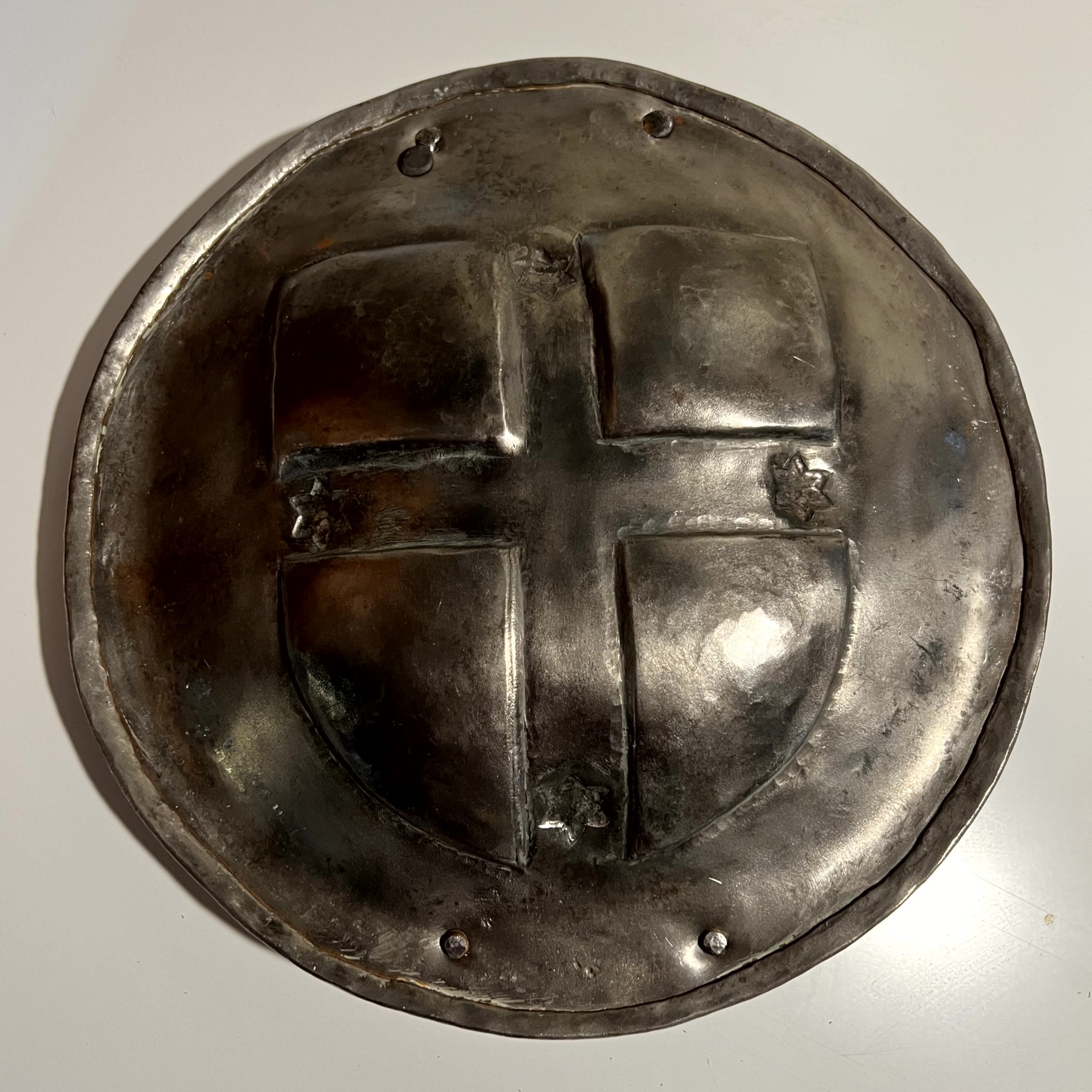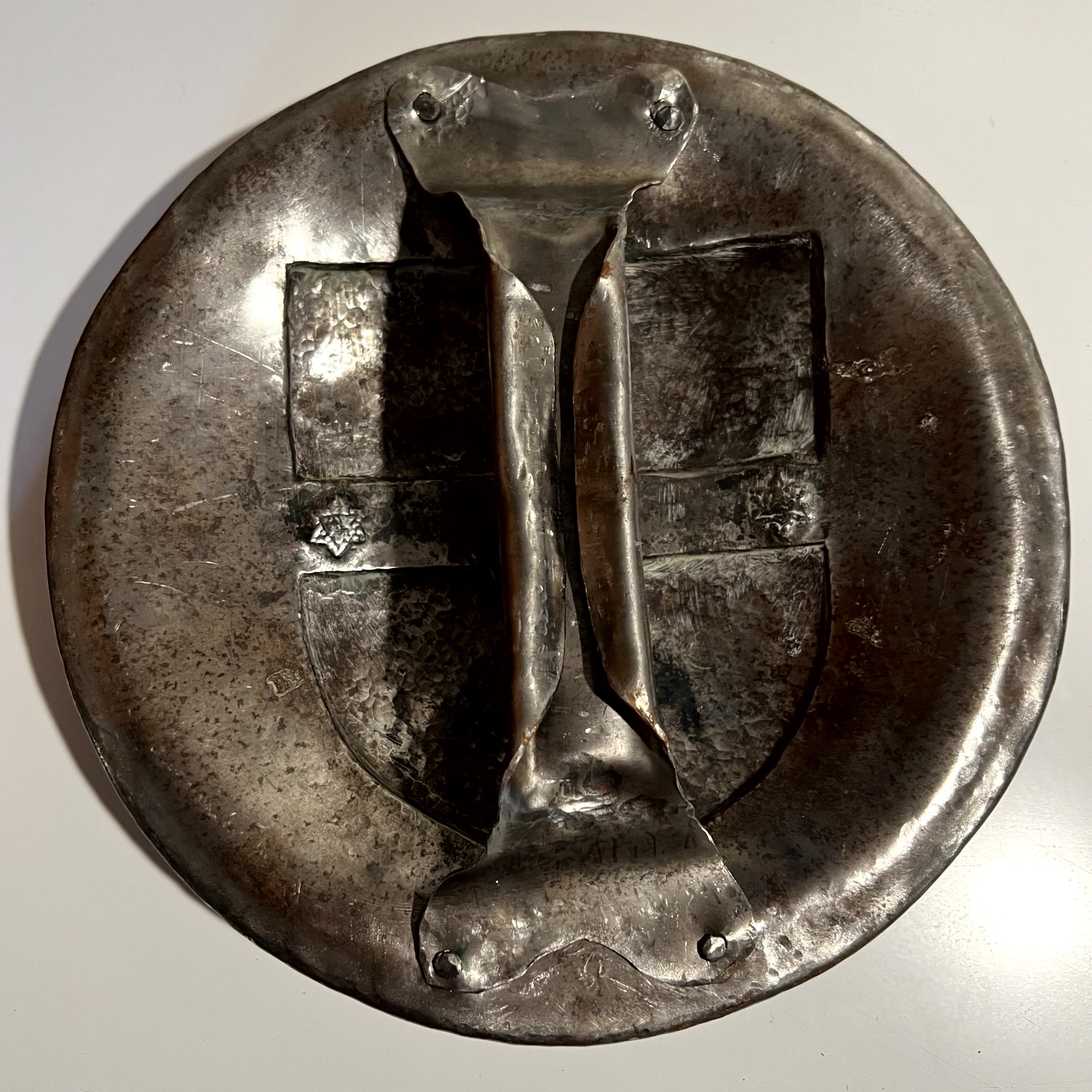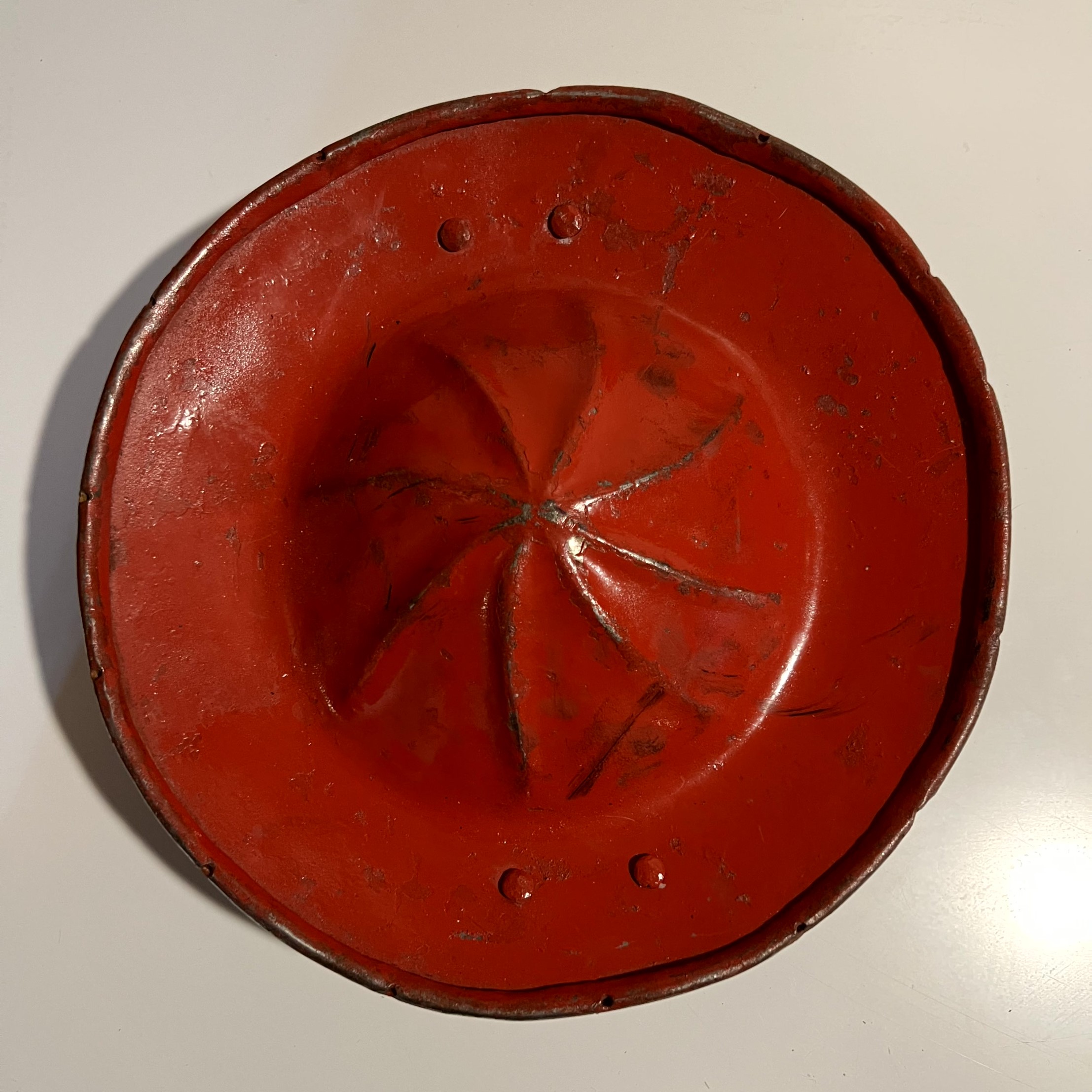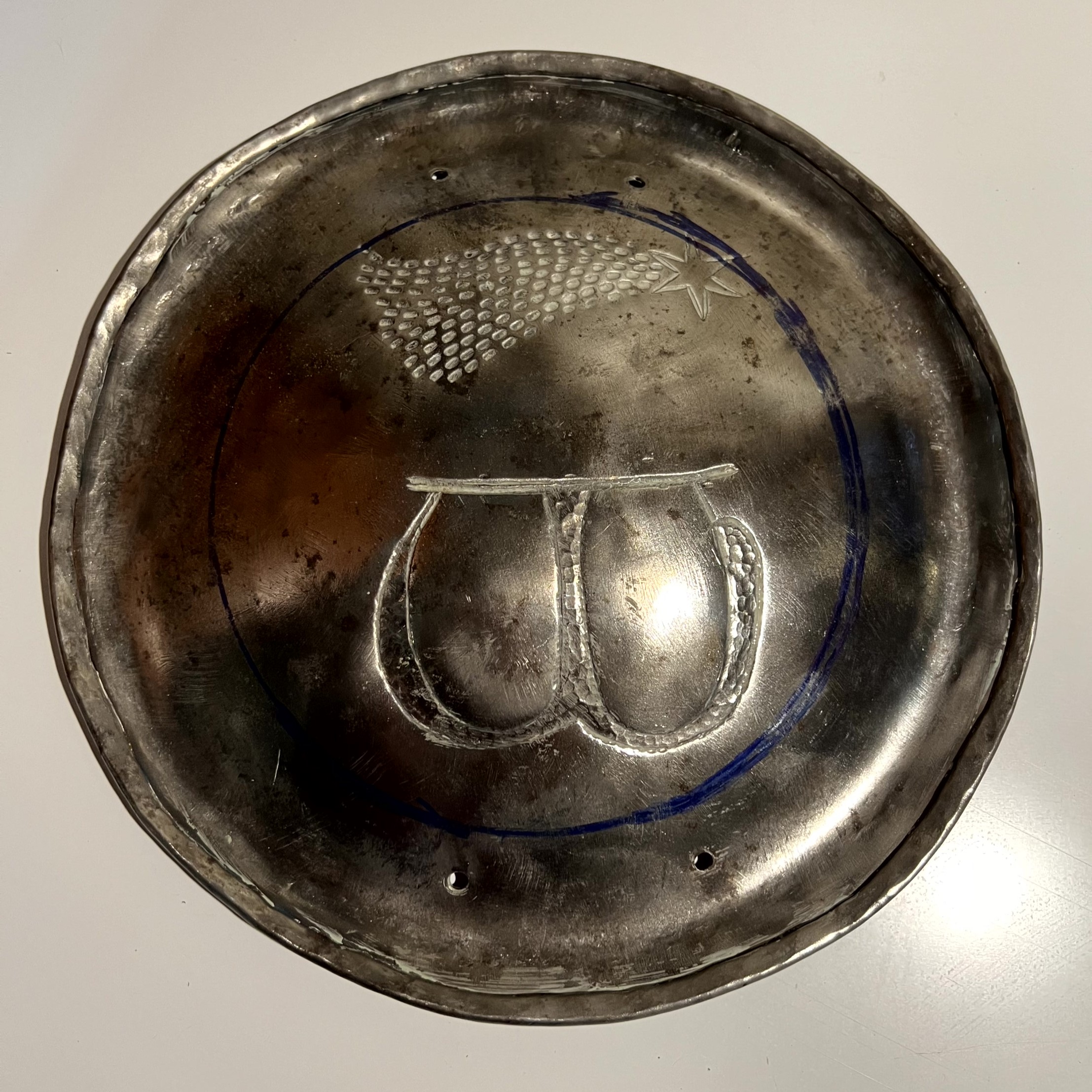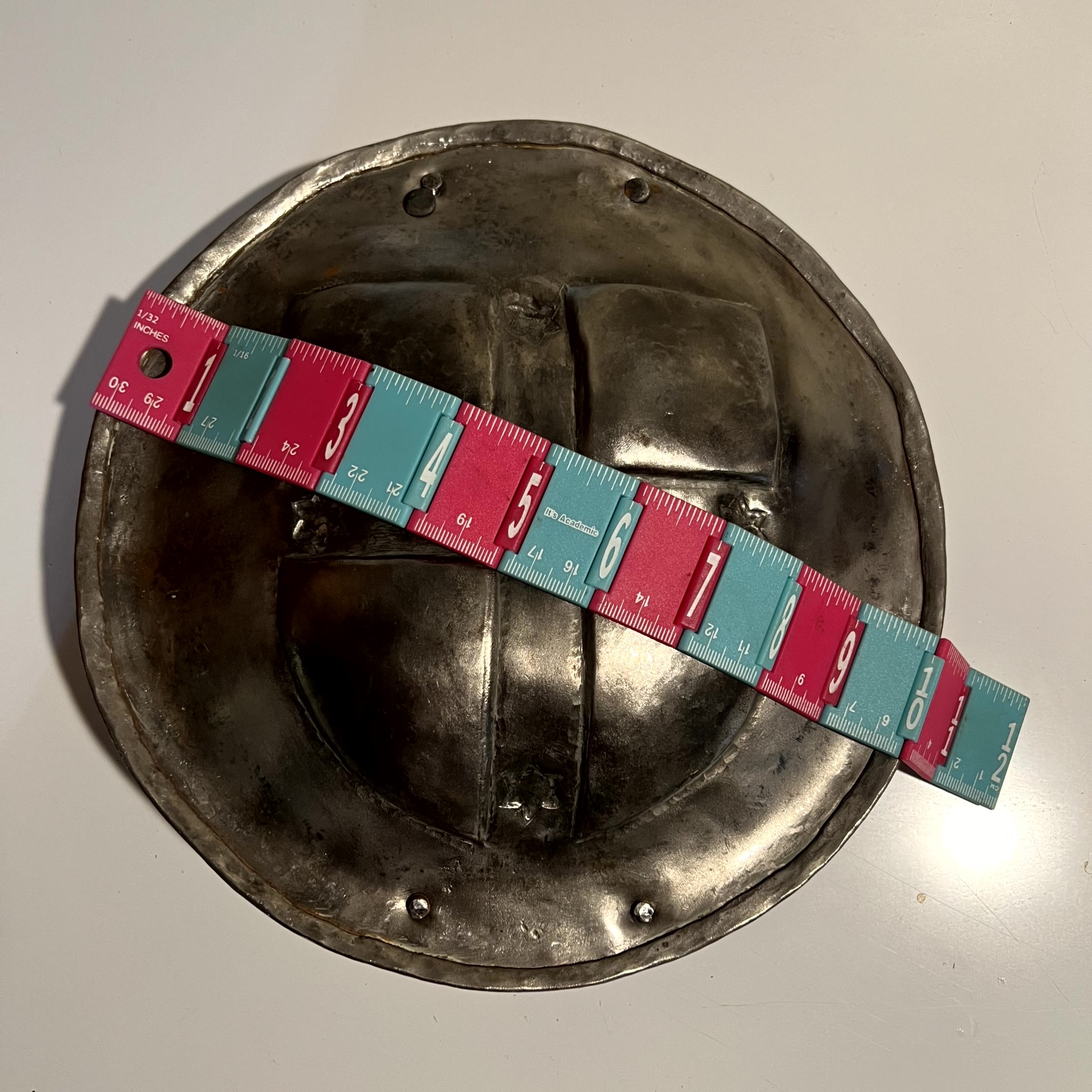Fencing Masks
Terry Tindil made and sold these masks from 2006 to 2014 on the web as "That Guy Products". These masks are intended to provide more protection to the brain than the familiar fencing mask. Terry's Masks and gorgets found popularity with HEMA (Historical European Martial Arts) and SCA (Society for Creative Anachronism) fencing communities. These groups study and compete in styles of sword play taught out of manuals written before the 18th century. These styles use swords that are heavier and less flexible than the familiar foil.
Terry decided to retire from manufacturing in 2014. He handed off gorget sales to darkwood armory. He handed off mask production to me Edwin "Giles" Gilbert. I have been offering them on my website Horsebows.com. In 2024 I sold that archery bow import business to "Grey Goose Bows". So a new website and name. As these masks cover much more of the head than standard fencing masks I feel they are more accurately described as helms.
The standard woven steel fencing mask is intended to reduce injury when fencing with foils and epees. In the centuries since sword fighting was a real military practice, fencers sought to make fencing safer by making their swords lighter and more flexible. So they created foils and epees and the light sabre.
Our game is based on the curiosity about the styles taught in the old manuals. We found that these techniques require swords that are heavier and stiffer than foils and epees. The intent of Giles helms=Tindal masks is to help protect fencers who are studying/playing with the heavier and stiffer swords which are more accurate reproductions of the swords intended for military or self defense in past centuries. These helms also allow greater freedom of movement and cooling than the mass-produced wire weave masks you are familiar with.
I initially created these masks about 2001, my goal was aesthetics. To make a fencing mask that looked like a military helm of the 16th century. Many of us create garb / costumes to look like "The Three Musketeers" or gentlemen of Queen Elizabeth’s court. A modern fencing mask clashes with the scene we are trying to create. As I had been making suits of armor for Knightly Jousting since 1978 my masks were quite sturdy. My friends asked me to make these for them. I did not have the time to get all of them made. So when Terry asked for the pattern I was glad to give them to him. He had been jousting in heavy armor for as long as I, so well understood building a sturdy helm. He made improvements and traveled further than I and found many fencers who wanted a helm like his. He found himself unemployed and decide to finish the masks folks had asked for before looking for a day job. He never did catch up with orders and it was 8 years and 100's of masks when he decided to retire "That Guy Products". Coincidence had me retiring from my day job at the hospital at that same time. I figured this was just what I needed to keep my hands busy.
Pricing
Usual prices for masks, this is with all leather in place and ready to wear.
In stainless steel: $550 -- Mild Steel $450
A visor model is $100 more. That is either mild or stainless steels.
Mask Shell = the steel parts
The masks are made from 18 ga. mild steel or "stainless steel 304" flat plate and perforated plate.
The perforationed plate are .125" (1/8") in a staggered pattern with a 3/16" offset which leaves 40% of the surface open. The pieces are hand riveted together using 1/8" mild steel rivets.
The back edge of the face is strengthened either by being cut from the finished edge of the perforated plate or rolled. The front edge of the back of head rests inside the back edge of the face so not strengthened. (That ought to satisfy the geekier of you).
Chin
Two chin designs: pointed or squared. No difference in strength, mostly aesthetic but if you have a very full beard I suggest the square chin.
Brow - forehead plate of steel
I offer two designs: half circle and quarter circle.
The half circle adds more rigidity to the mask and crowds your field of vision above the eyebrows. Recommended for very upright styles of fencing such as the German long sword schools.
The quarter circle is triangular with point down toward between the eyebrows. This increases your field of vision above your eyebrows. Some rigidity is traded off, still very strong. Recommend for the hunched over stance of some of the Italian style schools of rapier.
Having trouble visualizing? Trigonometry: Half circle is one fourth of a sphere. Quarter circle is one eighth of a sphere. The circle I am referring to is an imagined circle around the head at the level of the eyebrows. So the half circle forehead is a solid plate from temple to temple. The quarter plate a triangle from between the eyebrows up to top of head.
I use a mask with forehead plate made entirely of perforated steel. This allows even more air flow for cooling. I am old enough that I strive to avoid overheating and do not play hard against the heavier long swords.
Steel - all the options
Here are the options and prices, for the bare steel. I write this out to encourage customers to use their skills in sewing or leatherwork to finish their masks. Pounding iron is what I prefer doing, if you do the leather or cloth parts I can get back to more pounding. E-mail conversation welcomed.
Stainless steel
Stainless steel plate and perforated plate is 304 (all rivets are mild steel) = $230 front and $90 back.
16ga stainless steel perforated plate is available, but only works for the quarter plate forehead and adds $50. Stainless steel is half hardened in the perforating process, forming it into a half circle forehead or a face work hardens it to the point it cracks. Tempering stainless steel requires equipment I do not have.
Mild Steel
Mild steel is low carbon rolled plate = $170 front and $70 back in 18ga.
16ga perforated mild steel is available for face and forehead. It is heavier and stronger than 18ga mild steel and slightly stronger than 18ga stainless steel.
A face of 16ga mild steel adds weight to helm. More weight slows the rate of acceleration of helm when struck. Hence helm is moving slower when it accelerates the skull. Hence skull is moving slower when it starts to accelerate the brain. Concussion occurs when the brain is accelerated too fast by the skull. 16ga face Adds $50.
Foreheads of 16ga perf improves ventilation while retaining about the structural strength of 18ga mild solid plate. Add $40.
Painted most any color for $30
Mild steel fore head of 16ga solid steel may be available. $50
Mild steel fore head of 16ga perforated plate $40
I would like to talk you into ordering mild steel. Structural strength is nominally less than stainless steel, not enough to be noticed while in use. Rust is not as much of a problem as most folk assume.
Put a helm in a bag with a sweaty jacket and it will rust. A coat of paint protects well. If you want shiny helm, a coat of wax protects almost as well, better if you reapply occasionally. A designated cloth bag for helm gets waxy.
The first one I made in 1998 is mild steel, painted, and still being used. I refurbished it in 2020. A few dents hammered out, rust brushed off. The leather was still functional, barely, so I replaced it.
Suspension
Suspensions are 3-4 ounce leather straps. Arranged similar to most safety helmets and military helmets. Since they will get soaked with your sweat, they are made of vegetable/oak tanned leather. This is for two reasons: 1) To avoid the irritation some people's skin get from the chrome tanning chemicals; 2) Allow the leather to "wet form". When wet, the leather will tend to change shape and it becomes formfitted to your skull. Suspensions are fastened to the mask with screw rivets (Chicago rivets). These allow you to adjust the suspension in any dimension. I suggest you lock these closed with "lock tite" or similar glue. They will eventually unscrew themselves and sneak away. So pack a few spares - I shall send 3 spares.
Leather an inch across in a T shape goes from temples to top of head.
The top of head suspension is 3 straps. A thin short one attached to center of forehead strap. Two wider straps attached at 2 points on sides of head. Adjusted with a set of holes tied together with a shoe string such that top of helm is kept away from top of the skull.
Not the only way to create a suspension but it has been used for about as long as helms.
Back of Head Protection
Many fencers do not need one. If you practice a style that needs one.
A perforated steel plate about the shape of the back of skull. It is fastened to the top of the back of the mask with a cotter pin in a 16ga hinge (mild steel).
Straps run from back plate under chin of mask; to keep it in place as you move. A recent customer asked the strap be fastened to mask and run behind back plate, seems to also work well. The nape of the neck is draped with brigandine of leather and washers like the bib. Front edge (the only edge) is covered with the 2-3 oz leather for beauty and protect you from the saw tooth shape of sliced perforated plate.
Back plates may be ordered as a stand-alone item. Be aware that adding the back plate will require some metal work on the mask. Two holes drilled.
Rivets installed, screw rivets or hand hammered rivets. Or this could be done with a leather hinge-sewn or riveted.
Ordering a Mask
Answer all 8 questions:
- Style: pointed or square chin
- Brow plate style: half circle or quarter circle
- Leather color for bib and trim
- Rivet color: silver, gun metal, brass - sometimes copper and red available
- Steel type: 18ga mild steel or 18ga Stainless steel
- Back of head: 18ga mild steel, 18ga. stainless steel
- The following four measurements:
- Head height
- Height to brow
- Head width: Measurements are on the flat 2D plane, don't try to follow the face contours. Pretend you are measuring for a box to put your skull in sans ears). Best done with assistance. Using a mirror usually causes errors, a matter of angle of view.
- Circumference of head: Like measuring for a hat. I do not actually use it for the mask, but gives me a check to see if other 3 measurements are near correct. I am amazed by how many times there have been errors in head measurement.
- Do you wear glasses with the mask? I can bulge the face slightly to accommodate corners of glasses.
Email me at horsebows@gmail.com with questions. We shall discuss time till completion and payment.
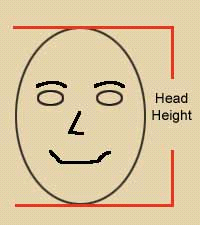
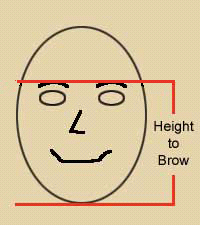
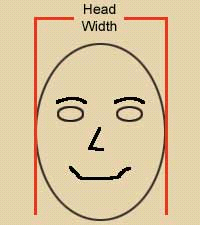
Payments for mask and other fencing gear:
I like PayPal. My account is my usual email address horsebows@gmail.com.
Do not like holding other peoples money and life (yours or mine) could change while waiting in queue. The queue has been as long as 14 months. Jan 2024 it is 8 months and with the sale of Horsebows archery import business , should get shorter. I ask for money when I am ready to start mask. About one month before will be finished. Half of mask price then. The balance and cost of shipping when mask ready to ship.
Shipping cost will be determined at time of final payment. Packaged the mask weighs 3 kilo, 30x25x25 cm. For my fellow Americans that is 6 pounds and 12x10x10 inches.
When you have emailed me all the measurements and color choices I will put your order in the queue.
If you would prefer to send a check, that is fine, less money to the credit card companies. Remind me to send you a few spare screw rivets or rapier blunts.
Accessories
Rapier tips / Rubber arrow blunts
These come in four diameters to match the diameter of arrow shafts.
They are also used in fencing to blunt the ends of fencing rapiers, schlagers, and daggers.
Available diameters:
- 1/4 inch blue
- 5/16 inch red
- 11/32 inch black
- 23/64 inch green
- Large HTM brand - They kinda look like a small crutch tip. These are the largest blunts a few rapiers do not fit in smaller, Also some two handed swords will fit in them. Many two handed swords need custom made leather ends.
For fencing some clubs require a metal washer or rawhide strip be put in to protect the rubber from the wear of the metal tip of the sword.
Any combination of blunt sizes are: $2 each, 6 for $10
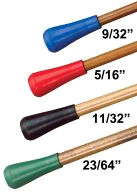
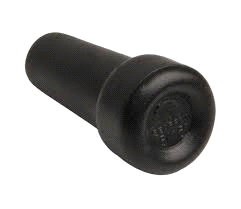
Bucklers
I manufacture steel bucklers. These are the simplest and most frequently pictured in paintings and manuals.
For rapier or small sword they are of 18-gauge steel and curved forward from the boss to catch sword points as pictured in the 17th century Bolognaise fencing manuals. 8 to 10 inches in diameter with steel handle. Price: $100
For broadsword — either steel or wooden — the bucklers are of 18-gauge steel and curled back to guide the cutting blows away. These are in many old paintings – for example hanging by the sword of English long bow men of the “100 years war”. I am attempting to reproduce the ones from the fighting manual that was written about 1325 in Germany and is called by its museum number "I-33" (Roman one, Arabic threes). Mine are 12 to 14 inches in diameter, a pronounced boss and then the rest slopes back at a lesser angle to guide the sword cut away. Not the one that looks like a straw hat. Price: $100
CAS Iberia offer these in 14ga. I find them too heavy for fencing and in my opinion over weight for broadsword.
